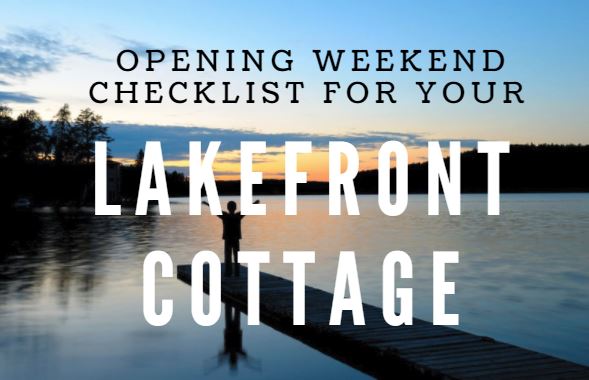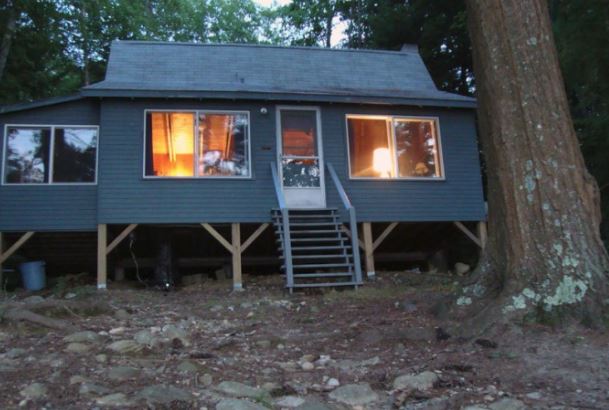
It’s time to open the cottage…but there’s no reason it has to be all busywork and no beach. Sure, there are things that absolutely need to be looked after, but not everything is urgent. So to make sure you have time this weekend to relax on the deck, Corona in hand, we’ve compiled a simple checklist of tasks you absolutely need to do so you can make the most of your long weekend.
Before you go
There’s nothing worse than arriving at the cottage to realize you’ve forgotten something. Sure, you’ll always need to make one more trip to the hardware store, but the better prepared you are, the more quickly you’ll be able to kick back and relax.
quickly you’ll be able to kick back and relax.
- Make sure your electricity is turned on. And be sure to phone whatever other services you’ll need before heading up. Its always best to do this before the weekend to be sure someone can help you.
- Be sure that everything is insured and you know where the documents are. This includes boat, trailer, and cottage insurance. And if you’re pulling a trailer up to the lake house, be sure to test all the lights and connections before your family is loaded into the car.
- Try to remember all and any keys you’ll need. Track them down and make sure you bring them with you.
- Put a tool kit together. You will need tools this weekend. Figure out which ones you’re going to need and pack them. And don’t forget the duct tape!
- Gather some cleaning supplies. You’re definitely going to need to do a little bit of cleaning this weekend. Even if all you do is wipe off the deck chair, you’ll need to have the right equipment to do it!
- If you’re going to need filters or batteries, then charge them and pack them. And obviously you’ll need clothes, water and food.
On arrival
There’s no telling what could be waiting for you when you arrive at your cottage property, especially if you haven’t been there all winter. The first thing you’ll want to do is look around for any outdoor or indoor issues that need to be fixed.
- Check for any damage to power lines, phone lines, the chimney, the deck, the dock, windows, screens, and under the cottage at the posts, pads, and beams.
- After surveying your property, head inside and check cupboards and counter tops for signs of mice or other animals, and look for any water damage that may have occurred over the winter.
Tuning up
- Replace batteries in smoke alarms and carbon monoxide detectors.
- Make sure your fire extinguishers are charged.
- Replace batteries in any flashlights.
- Clean the eaves troughs.
- Clear any large branches off the building and trim any that may have become too close to your cottage over the winter.
- Replace any filters that may need to be changed.
Turning on the taps
Perhaps the most involved part of opening the cottage is getting your water system going. If you have a pump that draws directly from the lake, here are the steps to get it up and running.
- Inspect all lines for signs of damage.
- Replace the pump’s filter.
- Prime the pump.
- Open a cold-water tap in your cottage, and be sure the cold-water valve to your hot water tanks is closed.
- Switch on the water pump at the panel box.
- Open all valves between the pump and your cottage.
- Open all cold water taps to remove air from the system.
- Close all the taps and look for leaks and hissing.
Turning on the hot water
Once your water’s running, you need to fill your hot water tank with water before turning it on. It’s pretty simple, really, but there are a number of steps you should follow to ensure you do it right.
- Be sure the hot water tank is off and all your taps are closed.
- Connect a hose to the drainage valve and run it outside. Open that tap.
- Open a hot-water tap.
- Close the drainage valve.
- Turn on the cold water intake to fill the tank.
- Watch the open hot-water tap. Once water is flowing through it, the tanks is full.
- Turn on the hot water tank, and watch for leaks.
That’s it! You’ve got water, hot water, a shelter, and electricity. What else do you need? You remembered cold beer, right?
Original Post by Cottage Life
Re-posted by Scott Freerksen “The Lake Guy”
